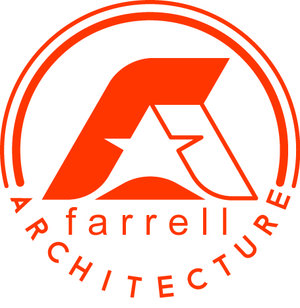Seeing Red for Green
Architects are notorious for being lousy at marketing themselves. Just for kicks, navigate over to any architect's website and you will see any or all of the following claims: Our process is to work with our clients, we're full service, we specialize in site specific design, and (most frequently) we do sustainable architecture. I would love to know what the first three mean, since I think these qualities are offered as evidence that these architects are somehow unique. That last one is something we need to unpack a little to understand.
We need to stop talking about how we drive sustainability into every project. There are four reasons why:
– People are tired of being told they need to be more 'green'
– Green is a cost increase
– Green takes commitment
– Using sustainable products and methods is no longer an option
Green fatigue is now real and probably has been since things went south with the economy in 2008. LEED, which is generally recognized as the steward of sustainability in construction, brought us a credible set of criteria and launched a movement to achieve social credit for adopting sustainable practices in design, construction and lifecycle management for buildings. They did this almost 15 years ago. When I sat for the oral portion of my licensing exam in California, I had to cite 3 ways I could incorporate sustainable practices into a project. That was in 2003. By that time LEED had already made its influence felt at the state policy level and was well on it's way to affecting the mindset of the general population. Fast forward to 2013 and those same people have endured a decade in which nearly every company from hippie owned granola farmers to (for real now) oil companies have stretched the definition of 'sustainable' to include their consumer product or service. This constant consumer bombardment, without any reference to standards or acceptable criteria, has worked to create former buzz words like green, sustainable, or eco-friendly into meaningless background noise. Architects have one of the only established means of evaluating and grading sustainability (LEED) yet the dull roar in the background has already turned our clients ears off.
Why? Well, in the short term, going green is not cheap. In the long term it comes with a surprising amount of effort. I've been part of initial efforts by enthusiastic clients who wanted desperately to be recognized and included with the popularity of the sustainable movement. Once we set down on paper what they need to do (generally using a LEED scorecard), the long term commitment and the relative cost increase, their tone changed. The very first question I always got at this point is. Well, can we just do some of the requirements and still get credit? These same people only wanted to answer the easy questions on their high school math exam, and somehow not take a penalty for omitting the hard ones. Going green means taking a critical look at the cost, changes, omissions and inclusions you need to adopt on a daily basis to have any demonstrable effect. I see LEED platinum buildings and just think to myself How did they ever find someone willing to take on that sort of commitment?
As architects we hold the keys to the future. We are tasked with many obligations; to our clients, their project, the contextual site, future occupants, etc. etc. We also have a responsibility to ourselves, our profession, our employees, and our peers in academia. We are the only ones who determine and drive the philosophical ethos of the profession. For us, it is well beyond the time when we can approach the long term ecological impacts of buildings as 'optional'. Yet we continue to self-promote by saying it is something we are good at. We specialize in sustainable architecture. Do you write marketing material to include your ability to calculate the maximum occupant loads used to figure out exiting requirements? Do you submit pictures of roof flashing for consideration by magazines? When was the last time you had a portfolio shot of a variance approval? We don't talk about any of these things because the people we are trying to reach couldn't care less, yet they are part of the core skills, services and responsibilities of a good architect. The same should be said of our ability to work at producing the long term sustainability of our projects. Failure in this area is as devastating as a roof collapse or more analogous, a slowing sinking foundation. In some states there are mandatory code minimums for building performance, almost always from an energy usage standpoint. These are generally a good starting point, but will get you no better grade than a C+ on that same high school math exam. Nothing less than an A+ is acceptable, yet the cost and effort to get there is frequently regarded by clients as 'optional'. It's not. You will never get an A+ without the entire project team on board, but you can stop talking about it as some sort of special service that architects provide. We're past that.

